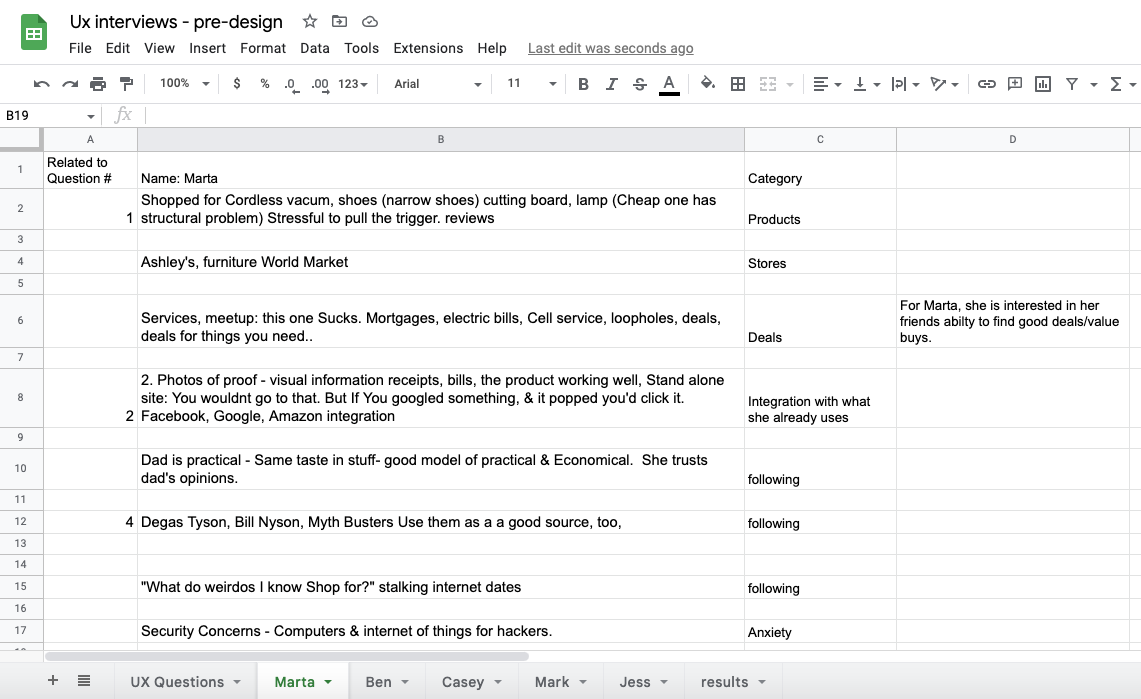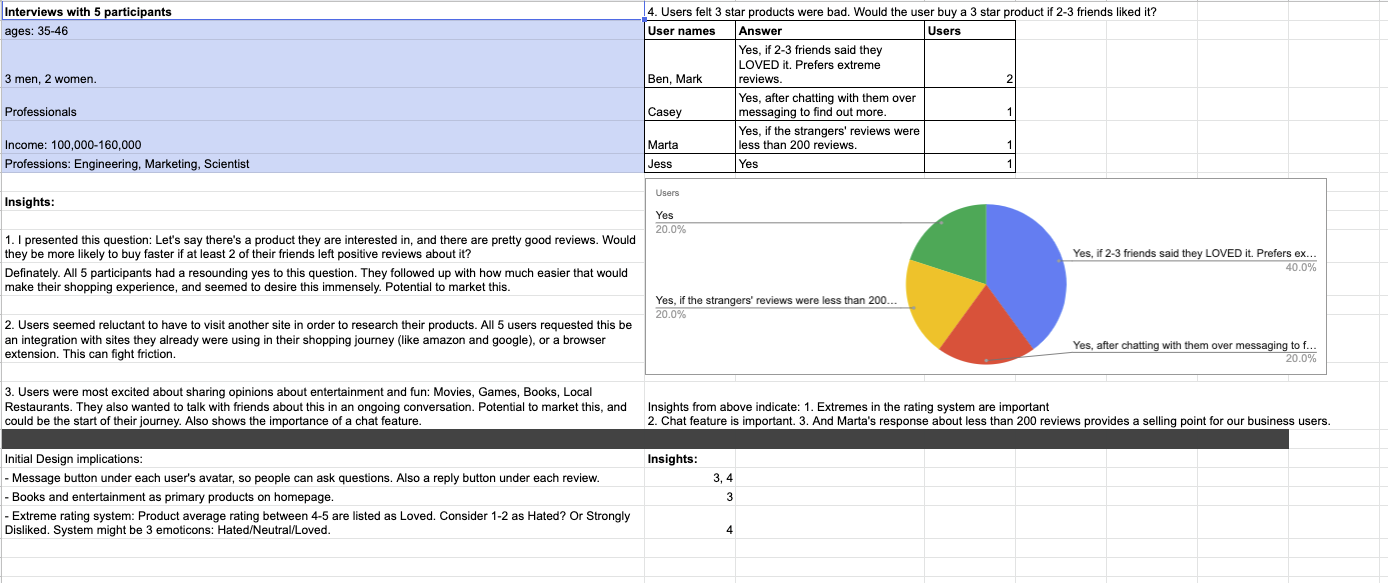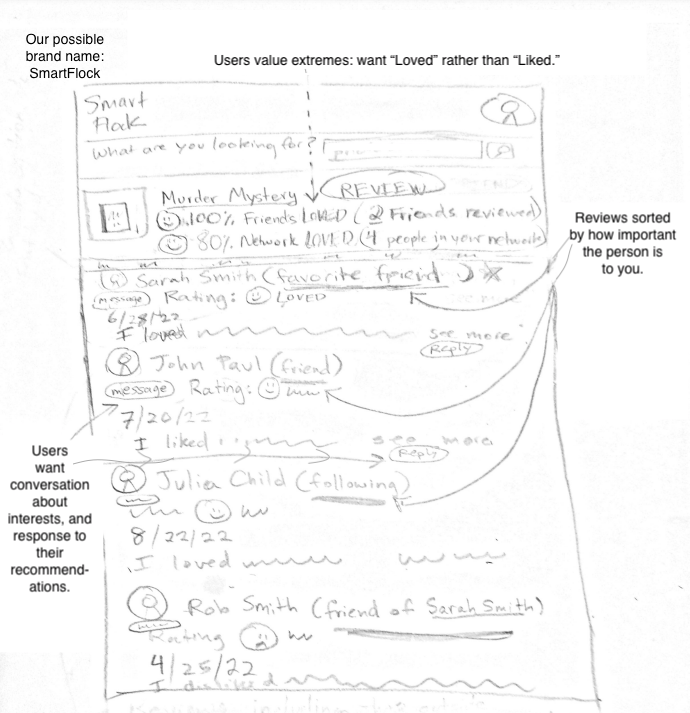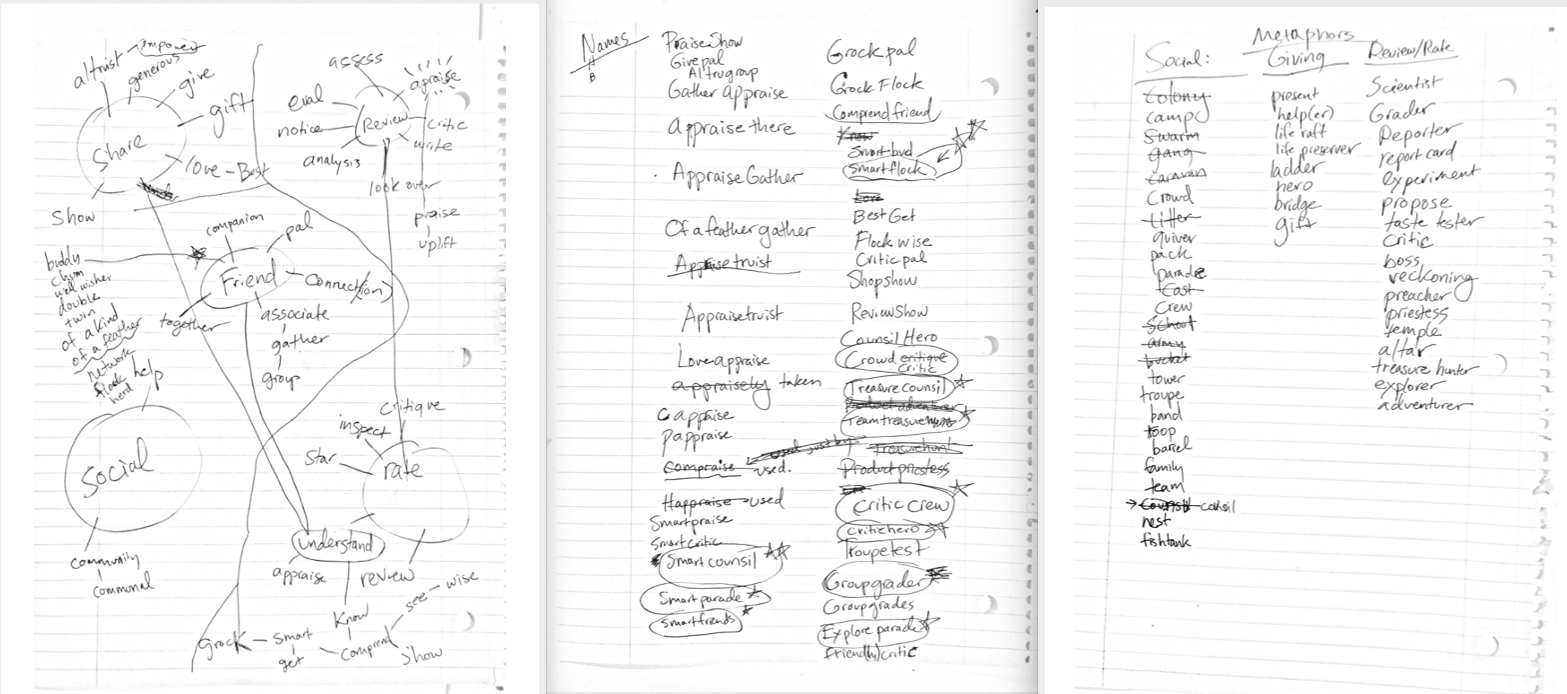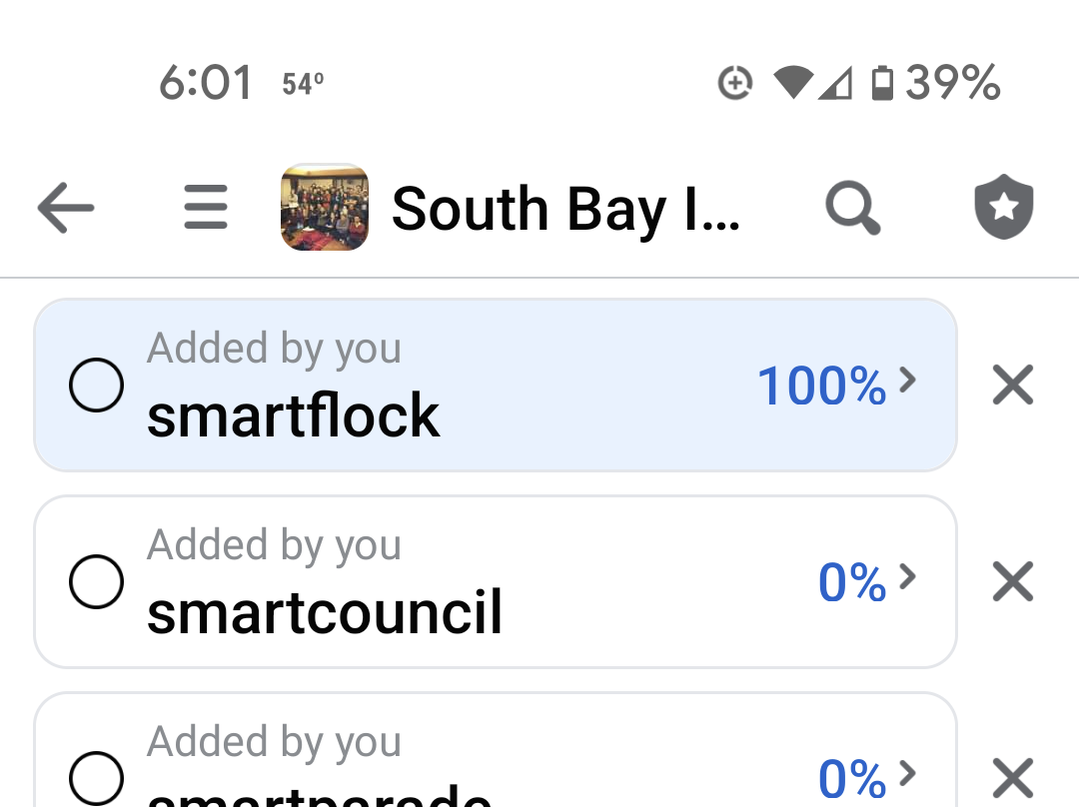UX Project: A Social Review Site
The Pitch:
Imagine you need a new frying pan. You hop on Amazon, and look at the one with the highest stars. Maybe you look at the reviews: 30% of the reviews are negative, 70% are positive. Now you start reading the reviews. But how do you know the positive reviews are not fake? Also, isn’t it annoying that you have to do so much research for a frying pan?
Who do you trust more than random people on the internet? Likely it’s your friends and family.
What if when you looked at a frying pan on the internet, your friends’ & family’s reviews showed before the randos’ reviews? What if when you saw an ad for a frying pan, it had your friends’ comments on it?
What if there was a social forum that allowed you to easily find out what products and services your friends recommend, and in turn, support your friends by sharing the product you love, in an easy, helpful way. Let your friends take the burden of shopping off your shoulders, and vice versa, just by sharing thoughts.
This product would solve the problem of anxiety on the internet by cultivating trust which contributes to conversion in a calculable way.
Five users aged 35-46 were interviewed. They really wanted this product to exist because they wanted to use it. This product solves a need most people have; the need to feel trust while internet shopping.
How will this make us money?
When businesses pay us, we can give them a widget to show users’ friends’ reviews first, on their site. Also, companies can pay in order to offer free trials to users in exchange for an honest review. Also any way that Yelp, Trustpilot, or other review sites make money. Or as Facebook makes money: selling data about users. And there are many more monitization opportunities.
Interviews:
Interviews were conducted in person or over zoom, one-on-one so that participants would not skew each others' responses.
Imagine you need a new frying pan. You hop on Amazon, and look at the one with the highest stars. Maybe you look at the reviews: 30% of the reviews are negative, 70% are positive. Now you start reading the reviews. But how do you know the positive reviews are not fake? Also, isn’t it annoying that you have to do so much research for a frying pan?
Who do you trust more than random people on the internet? Likely it’s your friends and family.
What if when you looked at a frying pan on the internet, your friends’ & family’s reviews showed before the randos’ reviews? What if when you saw an ad for a frying pan, it had your friends’ comments on it?
What if there was a social forum that allowed you to easily find out what products and services your friends recommend, and in turn, support your friends by sharing the product you love, in an easy, helpful way. Let your friends take the burden of shopping off your shoulders, and vice versa, just by sharing thoughts.
This product would solve the problem of anxiety on the internet by cultivating trust which contributes to conversion in a calculable way.
Five users aged 35-46 were interviewed. They really wanted this product to exist because they wanted to use it. This product solves a need most people have; the need to feel trust while internet shopping.
How will this make us money?
When businesses pay us, we can give them a widget to show users’ friends’ reviews first, on their site. Also, companies can pay in order to offer free trials to users in exchange for an honest review. Also any way that Yelp, Trustpilot, or other review sites make money. Or as Facebook makes money: selling data about users. And there are many more monitization opportunities.
Interviews:
Interviews were conducted in person or over zoom, one-on-one so that participants would not skew each others' responses.
This is an excerpt of 1 of the 5 one-on-one interviews I conducted. After the interview I categorized important items, and wrote down insights or how it might translate to design.
An excerpt from a report on some insights we can incorporate into the designs.
A rough sketch of the product page on our site which would show you your friends' reviews on the product. It's important to have these rough sketches in pencil, and during meetings, we can add or erase parts for our initial design.
Product Brand Naming Research
Product Brand Naming Research
In order to come up with names, I started with a mind-map around the central concepts of the site (far left page). I then placed words from these different groups together (middle page). Then I also made lists of metaphors under 3 main concepts, for example, "crew" to represent social group, and
"report card" to represent review.
I then asked colleagues to help pick the best ones, and then submitted the selected names to the public for voting, survey style:
"report card" to represent review.
I then asked colleagues to help pick the best ones, and then submitted the selected names to the public for voting, survey style:
SmartFlock was the winner!
